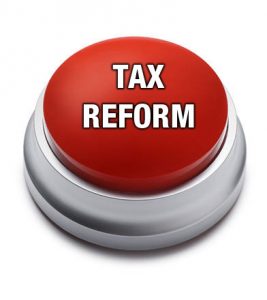 There is no easy button for tax reform.
There is no easy button for tax reform.
Republicans tax reform plans have changed since my last report on tax reform about six weeks ago. The Republican Senate agenda that was based on using the reconciliation process instead of needing 60 votes in the Senate, the republicans only need a simple majority of 51 votes for tax reform as well as repealing Obamacare is all but abandoned. To help understand what’s happening in Washington DC in the tax reform process, it makes sense to first look at progress in health care reform.
Republicans promised to repeal the Affordable Care Act on Day 1 of the new Congress and replace it with something new. President-elect Trump made ‘repeal and replace’ a central point in his campaign. That did not happen. Now everyone acknowledges that broad stroke repeal of current health care law will not happen. Republicans finally acknowledge that no workable replacement plan exists. We all agree – Democrat and Republicans – that further changes are needed to health care regulations over time but we just don’t agree on what those changes should be. The latest news is that a large block of low-income voters who supported Trump in his promise to repeal Obamacare did not understand that this is the same as the Affordable Care Act that they depend for their government-provided health coverage. Once learning this, public support for repeal has apparently dropped off. Let’s repeal Obamacare but don’t cut my health benefits. So, in summary, all the earlier talk of big, bold, fast now turns out to be small, wimpy, slow. That is reassuring to employers, investors and the stock market that rely on the status quo.
The same scenario is unfolding now behind the scenes in tax reform. Tax reform at this stage is driven by two primary designers: House Ways and Means Committee Chairman Kevin Brady (Texas Republican) and House Speaker Paul Ryan (Wisconsin Republican).
Everyone agrees that there has been no better opportunity for tax reform in the past 30 years since the Reagan era. Yet every significant component of tax reform proposal has as many detractors as proponents. Tax writers on the House Ways and Means committee reported in The Wall Street Journal today about being inundated with big business resistance to each component of tax reform. The most popular proposals, like cutting the corporate tax rate, would cause a big budget deficit without offsetting that increases. Republicans won’t do that.
The biggest tax revenue increase proposal referred to as a ‘border tax’ or ‘border adjustment’ would cause big consumer price increase and hurt the value of US pension plans with overseas assets. The one time cost to U.S. companies and individuals could total $2 Trillion! Even the White House has backed away from the proposal even though Trump want to retain the ability to punish specific companies that he singles out for exporting jobs.
Free market economists tell us that the best way to stop the export of jobs and close the import/export gap is to lower the standard of living of U.S. workers relative to the rest of the world. As politically unacceptable as that solution sounds, we now know that it is already happening and that’s what led to the Republican election win in the first place. Republicans in Congress would then have to cut entitlement benefits, which the block of poor Trump voters depend upon for survival. Republicans agree that would be politically damaging to the party. The head of the US American International Automobile Dealers Association summed up the tax reform proposals in The Wall Street Journal: “but when we look at the whole, I don’t think the juice is worth the squeeze.”
Meanwhile, Democrats have a good case and strong voter support to block any isolated tax reform measure like dropping maximum tax rates or repealing the estate tax – measures that benefits only the top 1%.
For our tax planning purposes: there is strong agreement that if the corporate tax rate drops below the marginal tax rate for individuals then more of us will switch to C corporations. If the deduction for health insurance is disallowed, then we will switch to other types of employee benefit plans. I do not see any real obstacles for my clients in working around the proposed tax limitations.
In the end, we all agree that tax reform is difficult and complicated. Changes will come. But the prospects of large sweeping change are as unlikely as those formerly promised in health care. Tax reform will be modest, slow and focused.
I am now telling clients that we don’t expect to see any significant tax law change early in this year and when it comes, perhaps late in 2017 or 2018, the changes are likely to have less effect than they might otherwise fear based on earlier news reports.


Leave a Reply